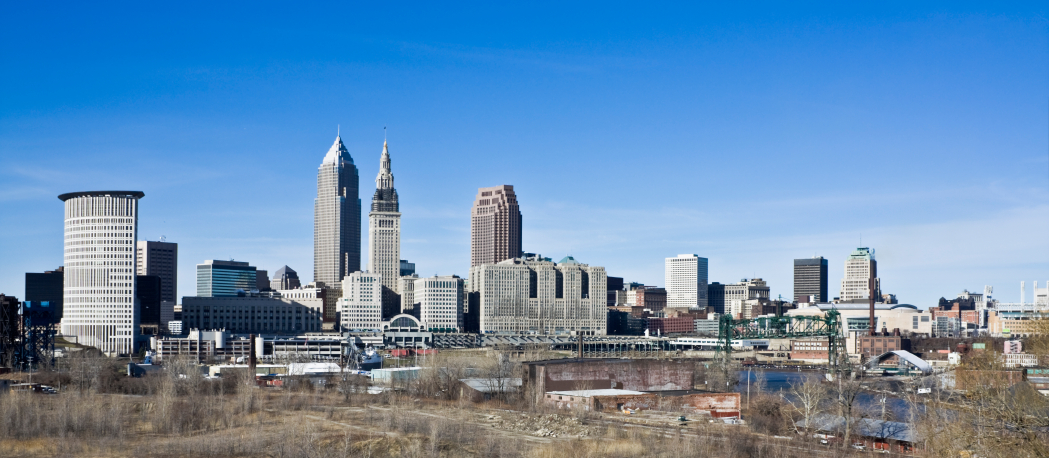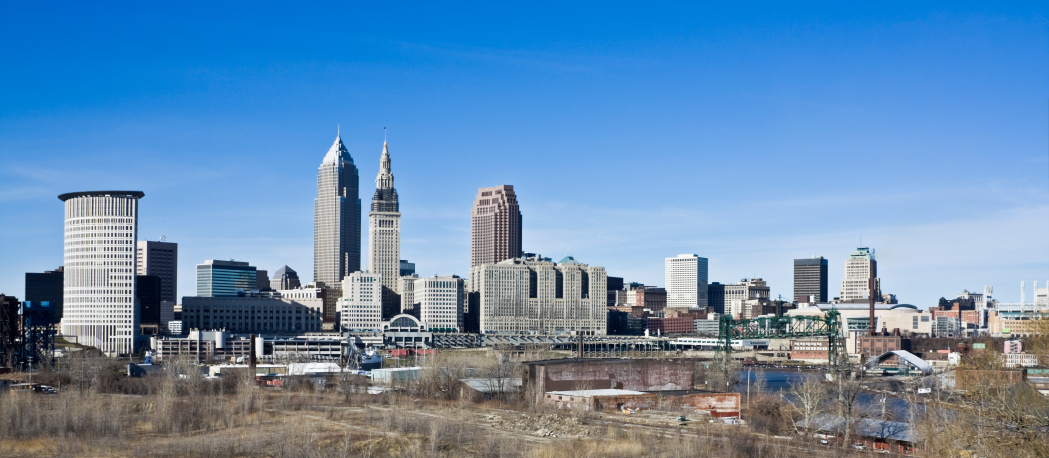 Is the way forward for our ailing economy to be found along the banks of Lake Erie?
Is the way forward for our ailing economy to be found along the banks of Lake Erie?
Despite talk of a recovery, the national economy remains in shambles. In Sunday’s New York Times, reporter Peter Goodman brought devastating news:
Economists fear that the nascent recovery will leave more people behind than in past recessions, failing to create jobs in sufficient numbers to absorb the record-setting ranks of the long-term unemployed.
Call them the new poor: people long accustomed to the comforts of middle-class life who are now relying on public assistance for the first time in their lives–potentially for years to come.
Goodman reports that 6.3 million working-age Americans have been unemployed for at least six months–the highest level in decades, and more than twice the number reached during the 1982-’83 recession.
Goodman’s article reminds me of something I’ve been saying since the financial meltdowns of 2008: the economic models that have held sway since the late 1970s, which were geared to maximizing global trade by transnational corporations, have been discredited, even on their own terms. They don’t generate broadly distributed wealth, they don’t create enough well-paying, skilled jobs, and they’re extremely vulnerable to shocks, wherein the public is obliged to pick up the tab for reckless bankers, who then trot merrily on their way. Worse still, the old models tend to plunder ecosystems and threaten the habitability of the planet (see change, climate).
I had hoped that the crisis, coming right in the middle of a national election, would inspire a fundamental rethinking of our economic policies–especially after Barack Obama won decisively. But then the new president started placing people like Larry Summers and Tim Geithner in key economic policy positions. Both are protégés of the old regime’s name-brand architect–former Goldman Sachs, Citigroup, and Treasury guru Robert Rubin; and both have plenty of prestige invested in propping it back up again.
Despite all the talk–idle, so far–of fundamental financial reform, the plan seems to be to patch up the economy, puff up yet another asset bubble, and hope that enough jobs eventually get created to push unemployment down. From the perspective of large holders of stock, it’s working–the S&P 500 is now trading some 60 percent above its March 2009 trough. But for most workers, it’s failing miserably–unemployment hovers stubbornly near 10 percent, etc.
Happily, on the ground, many people aren’t waiting for warmed-over Rubinism to protect their old jobs or create new ones.
In a must-read article in the March 1 issue of The Nation, Gar Alperovitz, Ted Howard, and Thad Williamson lay out what they call the “Cleveland Model,” a reference to that city’s emerging complex of worker-owned businesses under the Evergreen Cooperatives umbrella.
The key enterprise in the Cleveland initiative is the Evergreen Cooperative laundry, “a worker-owned, industrial-size, thoroughly ‘green’ operation” that “opened its doors late last fall in Glenville, a neighborhood with a median income hovering around $18,000,” The Nation reports. Overall in Cleveland, the poverty rate stands at about 30 percent; the population has halved since 1950. The hollowed-out city, like Detroit, Pittsburgh, and other rust-belt metropolises, stands as a stark rebuke to 30-plus years of de-industrialization and corporate-dominated globalization.
While these are “not your traditional small-scale co-ops,” the authors report, they are also not faceless entities that turn workers into cogs in a vast machine. The authors write:
The Evergreen model draws heavily on the experience of the Mondragon Cooperative Corporation in the Basque Country of Spain, the world’s most successful large-scale cooperative effort (now employing 100,000 workers in an integrated network of more than 120 high-tech, industrial, service, construction, financial and other largely cooperatively owned businesses).
The vision sounds a lot like the loose network of small but interconnected entities described by Jane Jacobs in her still-vital 1970 book The Economy of Cities–a model that facilitates both innovation and stability. (Jacobs famously contrasted two cities from Victorian England: “Efficient Manchester,” with its monolithic, export-minded, short-lived textile industry, and “Inefficient Birmingham,” with its durable labyrinth of small, overlapping, self-regenerating enterprises.)
To fund the Evergreen initiatives, the project’s founders have been resourceful: they’ve cobbled together funds from a combination of local foundations, banks, and city government, The Nation reports. And get this:
An important aspect of the plan is that each of the Evergreen co-operatives is obligated to pay 10 percent of its pre-tax profits back into the fund to help seed the development of new jobs through additional co-ops. Thus, each business has a commitment to its workers (through living-wage jobs, affordable health benefits and asset accumulation) and to the general community (by creating businesses that can provide stability to neighborhoods).
Besides the laundry, Evergreen also runs Ohio Solar Cooperative, which installs PV solar panels on commercial and government buildings and provides weatherization to homes. The group will soon roll out Green City Growers Cooperative, a “a 100% worker-owned, hydroponic, food production greenhouse.”
To hear The Nation tell it, Evergreen has a pretty savvy business plan:
The overall strategy is not only to go green but to design and position all the worker-owned co-ops as the greenest firms within their sectors. This is important in itself, but even more crucial is that the new green companies are aiming for a competitive advantage in getting the business of hospitals and other anchor institutions trying to shrink their carbon footprint.
So here we have a nexus wherein the somewhat hazy “green jobs” vision can come to fruition–empowered workers, earning a living wage, pushing the economy in a more ecologically sane direction. With businesses like the Evergreen co-ops in place, fast results can be expected when cities roll out pledges of carbon neutrality, as Seattle just has. Van Jones, ludicrously exiled from the Obama administration, where art thou?
And food, I hasten to add, can be a major force in bringing this vision to light. Even in the poorest neighborhoods in Cleveland, people spend about $1,000 per capita on food. The city is notorious for its gaping food deserts; thousands of people have to travel large distances for fresh food, and/or pay exorbitant prices for it; unemployment is high. With its plan to grow fresh produce in the city center, Evergreen’s Green City Growers Cooperative can, in one swoop, ameliorate all of those problems–and retain much of that $1,000 per head in food expenditures within the city.
All over the country, such initiatives are already providing a measure of economic stability as well as access to high-quality food. In New England, the once-dying mill town of Hardwick, Vt., has revamped its entire economy around food enterprises. To prove that I’m not reflexively anti-trade, I’ll note that the town’s food economy is anchored by High Mowing Seeds, a leading nation-wide provider of organic seeds. But High Mowing works closely with enterprises geared to the local market, Marian Burros reported in a 2008 New York Times piece:
Cooperation takes many forms. Vermont Soy stores and cleans its beans at High Mowing, which also lends tractors to High Fields, a local composting company. Byproducts of High Mowing’s operation–pumpkins and squash that have been smashed to extract seeds–are now being purchased by Pete’s Greens and turned into soup. Along with 40,000 pounds of squash and pumpkin, Pete’s bought 2,000 pounds of High Mowing’s cucumbers this year and turned them into pickles.
The Hardwick example teaches us that robust economies are built upon interlocking enterprises of a variety of scales and with a variety of business plans, geared mainly to local commerce but not limited to it. (I was excited to learn Monday that a Vermont farmer named Ben Hewitt is bringing out a book next month called The Town That Food Saved: How One Community Found Vitality in Local Food.)
Both the Cleveland and Hardwick models point to a kind of new, new urbanism: vibrant economies that give residents a direct stake in the greening of their communities and health of their neighbors. Our economic policymakers should forget about propping up too-big-to-survive-on-their-own banks, and start figuring out how to support and leverage these efforts.



